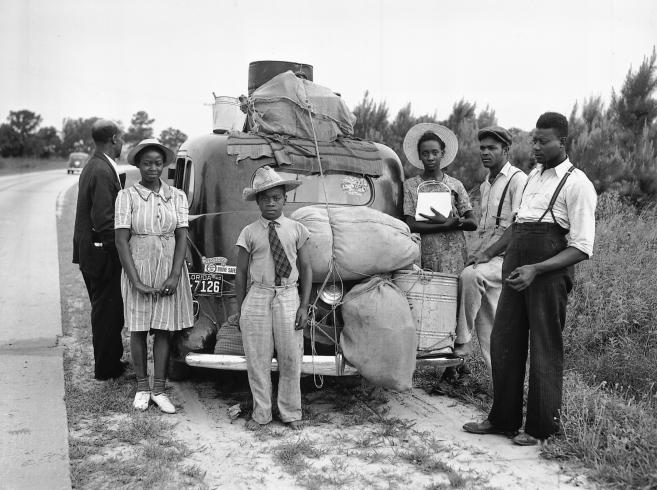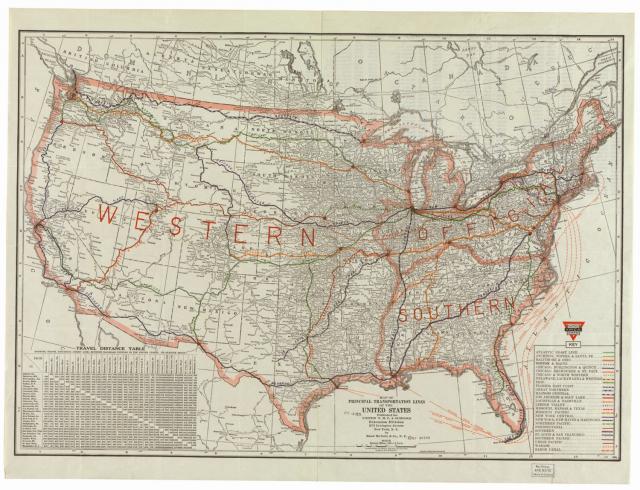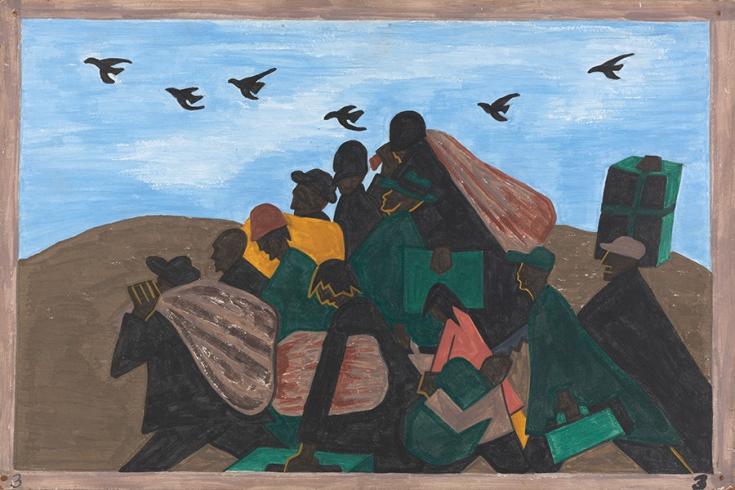The Journey North: The Migrant’s Experience

Part 1: Making Connections
Introduce:
- Provide the following prompt and questions to students:
- Imagine you had to move. The move could be to a new home, school, state, or even a new country. If you’ve experienced a move, then you can reflect on that experience. Reflecting on a real or imagined move, respond to the following questions:
- For what reasons did you move?
- How do you feel about the move?
- What did you look forward to about the move?
- What did you not look forward to about the move?
- What did you take with you?
- What did you say to the people you left behind?
- How might the people you left behind feel?
- Imagine you had to move. The move could be to a new home, school, state, or even a new country. If you’ve experienced a move, then you can reflect on that experience. Reflecting on a real or imagined move, respond to the following questions:
- After students write down their responses to these questions, have them share out. Jot down on chart paper their responses to serve as a reference for the rest of the lesson.
- Connect the idea of moving to the history of The Great Migration, which was a time period between 1916 and 1940 when hundreds of thousands of African Americans migrated from the South to the North in search of a better life. Specifically, have students reflect on how Southern black people may have felt as they made the decision to leave their homes and made the journey to the North.
Part 2: Emotion Through Art
Observe and Analyze:
- In groups of 3-4, students will study the following panels from The Migration Series: Panels no. 1, 10, 19, 20, 21, 24, and 33.
- As students study the panels, they should use the See, Think, Wonder strategy. Students should discuss each panel in their small groups and then capture their thoughts on chart paper. The chart paper should be broken up into three columns with the headings “See,” “Think,” and “Wonder.” Students should:
- Write down what they see in each panel.
- Write down what they think the specific people in the panels might be feeling and experiencing. They can reference the chart made earlier in the class and make connections using the same emotions and thoughts they shared as they reflected on their own personal moves.
- Write down what they wonder about what they see. They can pose questions they have about the people or things they see in the panels.
- Each group will share their charts to the rest of the class.
Part 3: Portraits of the Migrants
- After the class shares out and has a discussion, each student will select a panel (or teachers could opt to pre-select panels for each of the students). Try to make sure that students select mostly different panels.
- Students will look more closely at each panel and write down responses to the following questions. For each question, justify the answer, considering what in the panel makes you say that?:
- What might the person (if there are multiple people, select one person) be feeling at this moment?
- Why might they be feeling this way?
- What might they be hoping for?
- What might they fear?
- Students will then write a character portrait of the migrant in the panel. These should be written in the first person.
- As they write their character portraits they should:
- Describe the physical appearance of the migrant.
- Because the migrants don’t have detailed faces, this description could be about their location, their body position, and what they’re doing.
- This can also help students understand that appearances go beyond surface looks, since we cannot tell in Lawrence’s paintings exactly what the people look like.
- Describe what the migrant is experiencing.
- This could include any actions that they’re doing or that are happening around them.
- They could also describe the setting and the scenery around them.
- Describe what the migrant might be feeling at this moment.
- What decisions are they trying to make? Why do they need to make this decision?
- What are they hoping for? What do they fear?
- Students should use their notes from the questions and the earlier discussion to help with the emotional elements of the character portrait.
- Describe the physical appearance of the migrant.
- As they write their character portraits they should:
Share:
- Create a gallery.
- Have students create a final draft of their written character portraits on cardstock with markers or colored pencils. This will help give it a polished feel.
- Display Lawrence’s panels next to the written character portraits.
- Encourage students to read the character portraits of the migrants, written by their classmates.
- You could also assemble the panels and character portraits into a book titled, “Portraits of the Migrants: A Story of the Great Migration.” Then, have the students do a read aloud.
Optional Extension Activity: Character Portraits Poetry
Have students turn their written character portraits into poetry.
- They can use this portrait poetry guide to help them create their poems. If you’ve taught them about different poetic structures, you can also use that as a guide.
- Students can be creative with how they represent the poem. Here are some different examples of different representations of portrait poetry.
- Students should then share their poems.
- The poems can be paired with the full character portraits into a book titled, “Portraits of the Migrants: A Story of the Great Migration.”
Additional Context
Lesson Context
Jacob Lawrence created an ambitious 60-panel series that portrays the Great Migration, the flight of over a million African Americans from the rural South to the industrial North following the outbreak of World War I. By Lawrence’s own admission, this was a broad and complex subject to tackle in paint, one never before attempted in the visual arts. The series captures themes of struggle, hope, triumph, and adversity.
Following the example of the West African storyteller or griot, who spins tales of the past that have meaning for the present and the future, Lawrence tells a story that reminds us of our shared history. At the same time, he invites us to reflect on the universal theme of struggle in the world today:
To me, migration means movement. There was conflict and struggle. But out of the struggle came a kind of power and even beauty. ‘And the migrants kept coming’ is not only a refrain used as the caption for Panel no. 60…, but it is also a refrain of triumph over adversity. If it rings true for you today, then it must still strike a chord in our American experience.
Lawrence evokes a sense of the migrants’ hope on their journey north and the realities of their new life in northern cities - stories of finding new jobs, homes, and communities, living in crowded urban environments, and facing a new form of discrimination.
Key Terms
The Great Migration: In the Southern US, African Americans endured blatant discrimination and segregation as part of Jim Crow laws, as well as poor economic conditions. In the hopes of improved living and working conditions, hundreds of thousands of African Americans migrated from the South to the North, in particular to Chicago, Los Angeles, Detroit, Philadelphia, and New York, between 1916-1940.



